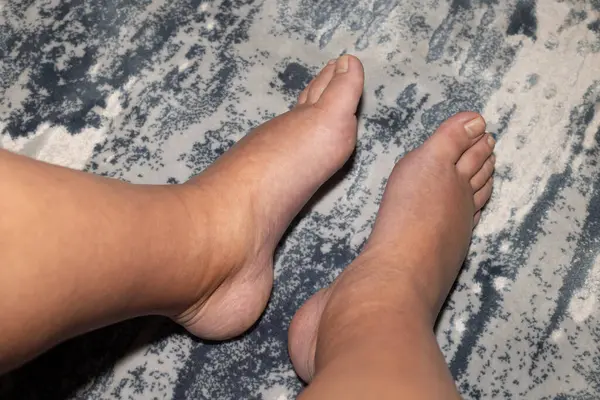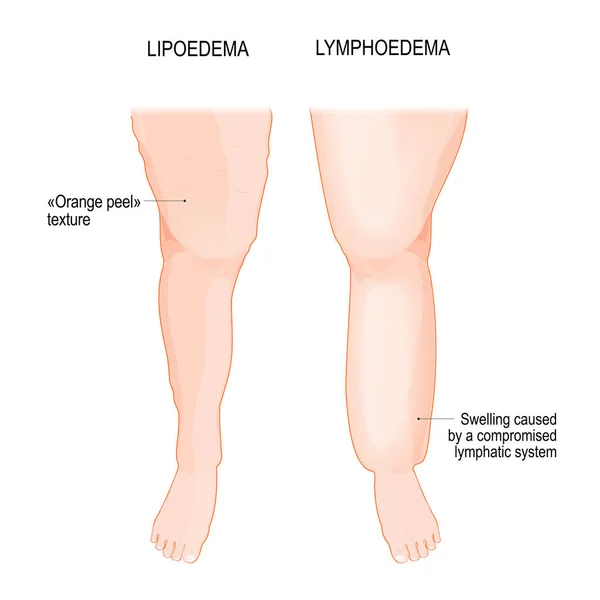My Journey to Lipedema Treatment, I have consistently faced challenges regarding my weight; however, three years ago, I observed a significant change—my legs, particularly around the knee area, began to swell noticeably.
I consulted a physician, who promptly dismissed my worries with a condescending remark, stating, “It’s safe to say you don’t have a tapeworm,” in reference to my larger physique.

This encounter marked the onset of a series of dismissive and gaslighting interactions with healthcare providers until I ultimately discovered that I was suffering from lipedema, which allowed me to start considering treatment alternatives.
Initially, I attributed my weight gain to stress stemming from both personal and professional challenges. As a consultant, international speaker, and writer with a doctorate in organizational leadership, I was navigating significant difficulties at home as well. I was resolute in my desire to manage my weight, engaging in regular exercise and exploring various dietary options, including vegan, vegetarian, and gluten-free diets. Unfortunately, none of these approaches yielded results, and my legs continued to swell. Medical professionals repeatedly suggested that I was simply “overeating” or advised me to “eat less and exercise more.”
Despite my persistent efforts, the weight burden on my knees became increasingly intolerable, leading to instability while navigating stairs. Eventually, even the act of walking transformed into a daunting challenge. It felt akin to attempting to move with heavy tree trunks affixed to my legs—this has become my daily experience.
As my physical condition deteriorates, my mental well-being also declines. Each time I gaze into the mirror, I am confronted with a stranger; I no longer recognize the person reflected back at me. The weight in my legs, the additional pressure around my knees, and the sheer discomfort of daily movement are overwhelming. I sought relief through antidepressants, hoping they would alleviate both my physical and emotional distress, yet nothing appeared to provide any significant improvement.
What Is Lipedema? Symptoms and Causes
Lipedema is a chronic condition characterized by an abnormal accumulation of fat in the legs, thighs, and sometimes the arms. Unlike regular obesity, lipedema fat is resistant to diet and exercise, leading to disproportionate body shapes. Common symptoms include:
- Swelling in the lower extremities
- Pain or tenderness in affected areas
- Easy bruising
- A feeling of heaviness or fullness in the legs
The exact cause of lipedema remains unclear, but it is believed to have a genetic component, often running in families. Hormonal changes may also play a role, as many women report symptoms worsening during puberty, pregnancy, or menopause. Understanding these symptoms and their implications is crucial for early diagnosis and effective management.
The Lipedema Symptom That Caused Me to See a Specialist
My journey began with a persistent feeling of heaviness in my legs. As daily activities became increasingly challenging, I realized that something was amiss. The discomfort escalated to the point where even standing for short periods became unbearable. This symptom was unlike anything I had experienced before; it was not merely fatigue or soreness but a profound sense of weight that seemed to anchor me down.
Despite seeking help from various healthcare providers, my concerns were often met with skepticism. Many attributed my symptoms to weight gain or lack of exercise without considering the possibility of an underlying condition. It wasn’t until I found a specialist who understood lipedema that I began to see a glimmer of hope.

Getting Diagnosed with Lipedema
Receiving a diagnosis of lipedema was both a relief and a challenge. After years of feeling dismissed by medical professionals, finally having a name for my condition validated my experiences. The diagnosis process typically involves a physical examination and an assessment of symptoms. In some cases, imaging studies may be used to differentiate lipedema from other conditions such as lymphedema.
It’s essential for individuals experiencing similar symptoms to advocate for themselves and seek specialists familiar with lipedema. Early diagnosis can lead to more effective treatment options and improved quality of life.
Lipedema Treatment Options
Treatment for lipedema focuses on managing symptoms and improving quality of life rather than curing the condition itself. Several options are available:
- Compression Therapy: Wearing compression garments can help reduce swelling and improve circulation in affected areas.
- Manual Lymphatic Drainage (MLD): This specialized massage technique helps promote lymphatic flow and reduce fluid retention.
- Dietary Changes: While diet alone cannot eliminate lipedema fat, adopting an anti-inflammatory diet can help manage symptoms.
- Surgical Options: In severe cases, surgical interventions such as liposuction specifically designed for lipedema may be considered.
Each treatment plan should be tailored to the individual’s needs and circumstances.
My Lipedema Treatment Plan
I have chosen to proceed with a varicose vein surgery known as phlebectomy, which is a minimally invasive six-step procedure designed to eliminate damaged veins. Although this requires a significant commitment, I am already observing positive outcomes. In addition to the surgery, I have invested in a grounding machine, which I utilize three times daily. This device, also referred to as a vibration plate, employs micro-vibrations to enhance muscle stimulation and improve blood circulation.
It is truly impressive—I can distinctly feel the fluid circulating through my body following each session. To prepare for my forthcoming surgery, I have also adopted a stringent anti-inflammatory diet.
My vascular surgeon advised me to lose as much weight as possible prior to the procedure to ensure the best possible results. Consequently, I completed a Viome home test that assessed my gut microbiome to identify foods that may trigger inflammation for me. Based on the results, I am now concentrating on consuming non-inflammatory staples such as chicken, rice, and cheese.
It has been a month since I underwent the vein procedures, and I am finally witnessing progress. My right leg has reduced in size by 1.5 inches, and I have lost 3 inches around my hips. These developments are not only motivating but will also contribute to optimizing the outcomes of my next procedure.
After receiving my diagnosis, I collaborated closely with my healthcare team to develop a comprehensive treatment plan. This plan included:
- Compression Garments: I began wearing custom-fitted compression stockings daily to manage swelling.
- Dietary Adjustments: I adopted an anti-inflammatory diet rich in whole foods while avoiding processed foods and sugars.
- Regular Exercise: Incorporating low-impact exercises like swimming and walking helped improve circulation without exacerbating my symptoms.
- Lymphatic Drainage Therapy: Weekly sessions with a certified therapist provided significant relief from discomfort.
This multifaceted approach has made a substantial difference in managing my condition.
How to Find a Lipedema Surgeon
Finding a qualified surgeon experienced in treating lipedema is crucial for those considering surgical options. Here are some tips:
- Research Specialists: Look for surgeons who specialize in liposuction techniques specifically designed for lipedema patients.
- Seek Referrals: Ask your healthcare provider for recommendations or consult support groups for personal experiences.
- Check Credentials: Ensure that any potential surgeon is board-certified and has experience with lipedema patients.
- Consultations are vital; they provide an opportunity to discuss concerns and expectations before making decisions about surgery.
My Lipedema Treatment Journey
My journey toward managing lipedema has been transformative yet challenging. Each step— from initial misdiagnosis to finally finding the right treatment—has taught me the importance of persistence in advocating for one’s health.
Through education about the condition, connecting with others who share similar experiences, and actively participating in my treatment plan, I have regained control over my life. While living with lipedema presents ongoing challenges, understanding the condition has empowered me to seek effective solutions.
In conclusion, if you suspect you may have lipedema or are struggling with unexplained leg pain or swelling, do not hesitate to seek help from specialists who understand this complex condition. Your journey towards understanding and managing your health begins with awareness and advocacy—just as mine did.
Also Read | Strength Training: Your Secret Weapon Against Menopause Belly Fat and Prevent Osteoporosis







